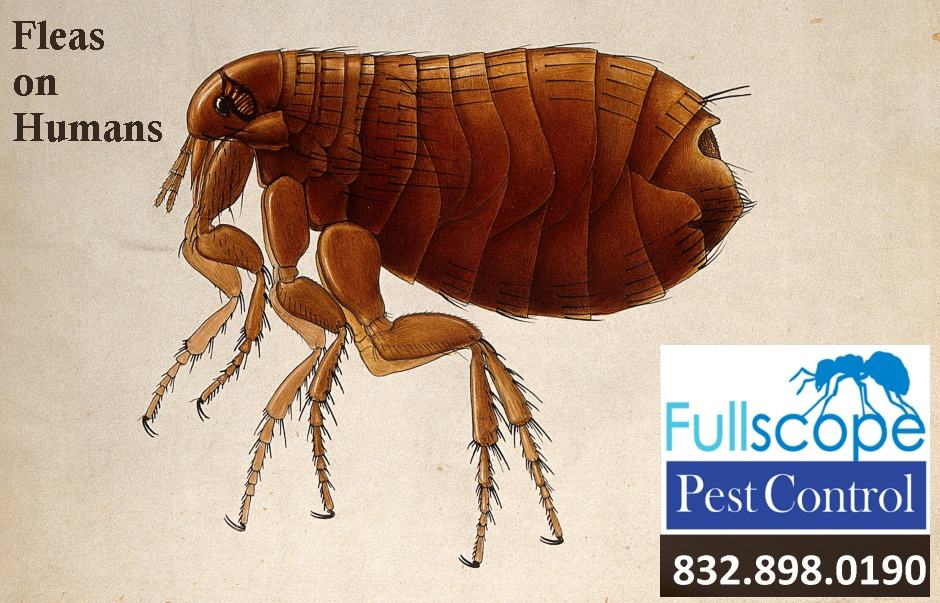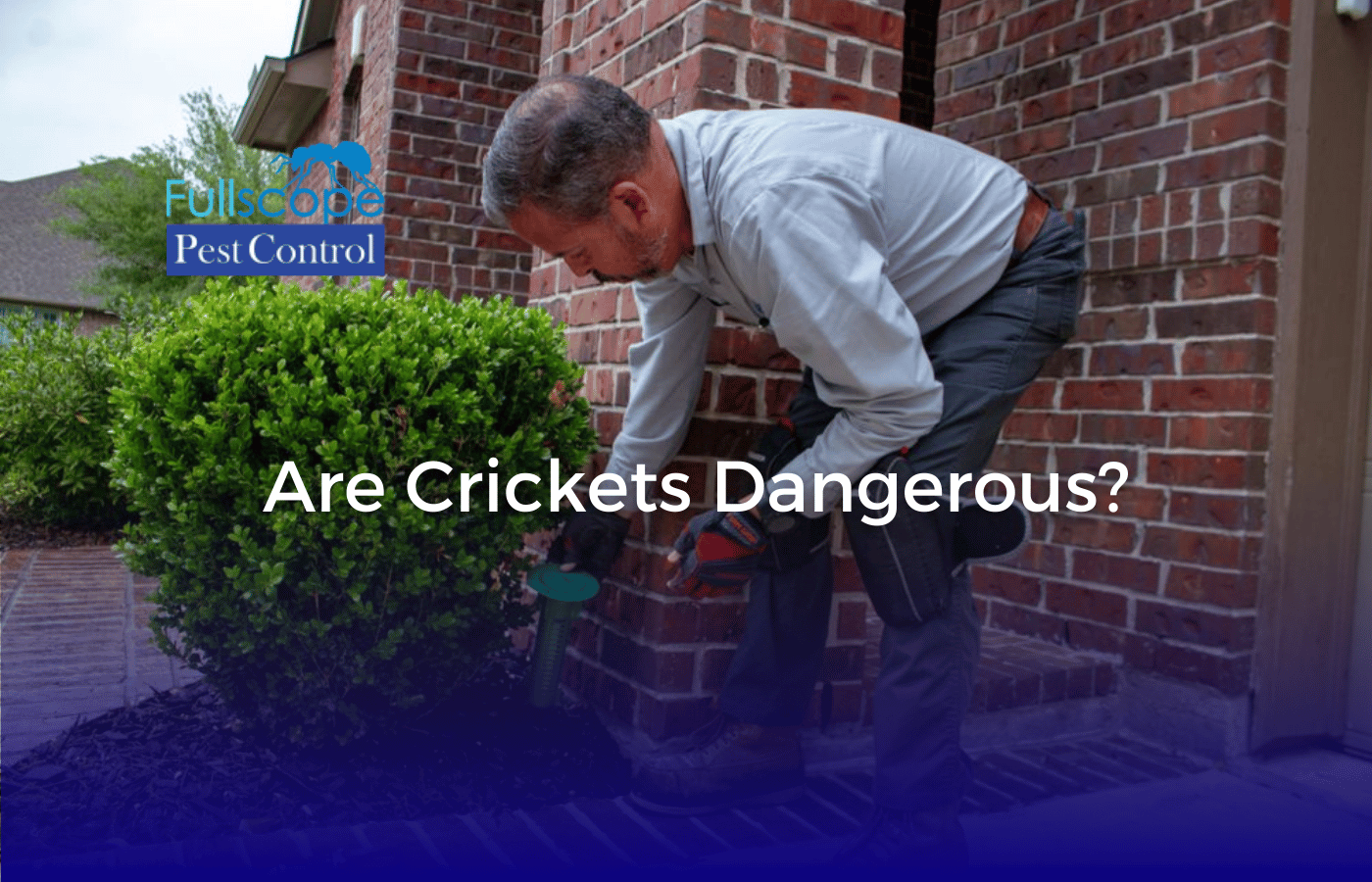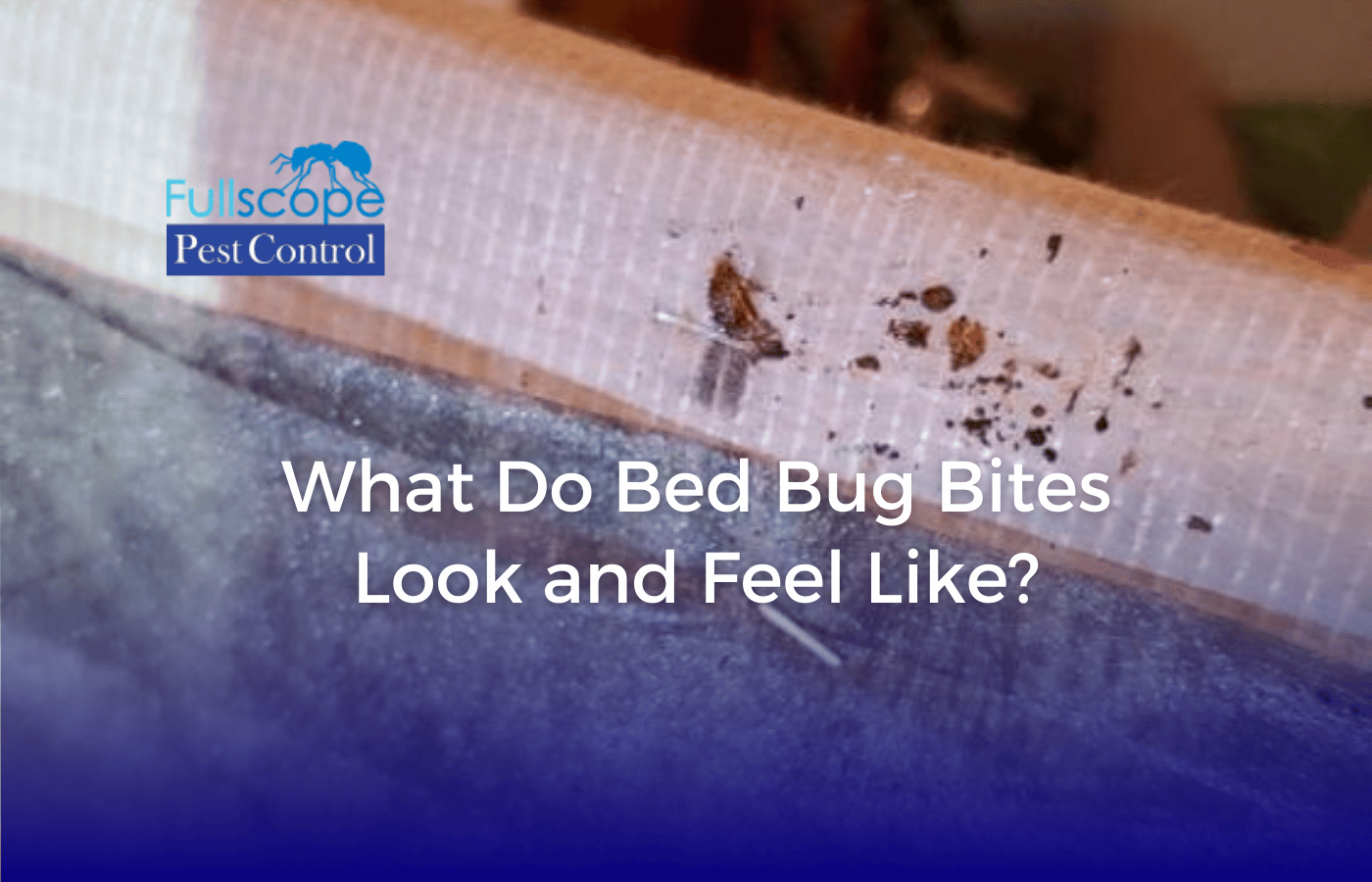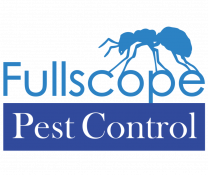No doubt you’re probably used to thinking about dogs scratching their torsos vigorously because they have fleas. Cats also can get fleas, even if they are primarily indoor cats. Fleas are aggressive external blood-sucking parasites that have been known for centuries to plague animals and humans alike.
Fleas’ first choice of animal hosts are actually rodents and other mammal vermin, like raccoons, squirrels, mice, and rats, but they will also feed off of the next best alternative. In the absence of rodents/vermin, and of domestic pets, guess where fleas will go next for blood meals if they’ve made their way indoors. Yes, fleas also bite and feed on human beings to get the blood they need to survive and to reproduce.
Careful not to confuse fleas with bed bugs, however. Fleas get understandably confused with bed bugs on a regular basis, probably because of their similar appearance (roundish and brown), as well as the similarity in the appearance of their bites.
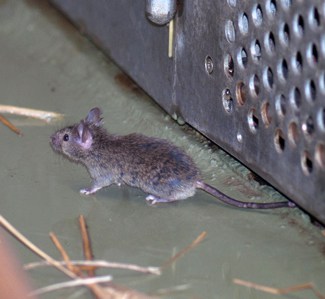
Flea bites can be itchy and aggravating enough, but worse, these parasites are transmitters of bacteria, diseases, and other contaminants. Fleas are one of the primary causes of the spread of the Black Death (the Plague) during the Middle Ages, which killed hundreds of millions of people. Even with all our advances since then, fleas are still a public health concern.
No doubt you’re probably used to thinking about dogs scratching their torsos vigorously because they have fleas. Cats also can get fleas, even if they are primarily indoor cats. Fleas are aggressive external blood-sucking parasites that have been known for centuries to plague animals and humans alike.
Fleas’ first choice of animal hosts are actually rodents and other mammal vermin, like raccoons, squirrels, mice, and rats, but they will also feed off of the next best alternative. In the absence of rodents/vermin, and of domestic pets, guess where fleas will go next for blood meals if they’ve made their way indoors. Yes, fleas also bite and feed on human beings to get the blood they need to survive and reproduce.
Be careful not to confuse fleas with bed bugs, however. Fleas get understandably confused with bed bugs on a regular basis, probably because of their similar appearance (roundish and brown), as well as the similarity in the appearance of their bites.

Flea bites can be itchy and aggravating enough, but worse, these parasites are transmitters of bacteria, diseases, and other contaminants. Fleas were one of the primary causes of the spread of the Black Death (the Plague) during the Middle Ages, which killed hundreds of millions of people. Even with all our advances since then, fleas are still a public health concern.
How Do Fleas Get Into Your Home?
If you have a pet (or more than one), fleas are known to hitch a ride indoors on pets who play outside, and then head inside. When a flea, or fleas, sneak indoors, it will then jump off your pet to lay eggs, which can lead to an infestation. Often fleas simply lay eggs right on the animal (after which they slide off into your carpeting, onto your furniture, into the pet’s bedding, etc.)
Fleas can also hitch a ride indoors on a human just as easily (Legs, shoes, sandals, ankles, etc.).
How Many Types of Fleas Bite Humans?
There are some 2,500 known flea species throughout the world, and the most common in the United States is the Cat flea. Cat fleas prefer cats as hosts, but they will also feed on dogs and humans. Humans can also be bitten by what are known as “sand fleas,” which most often live in coastal/beach areas.
Here are the most common species of fleas that homeowners will typically deal with:
- Cat fleas (Ctenocephalides felis) – Cat fleas Cat fleas prefer cats as hosts, but will also latch onto dogs, and feed on human beings.
- Dog fleas (Ctenocephalides canis) – Dog fleas are similar to cat fleas but prefer dogs over cats and humans.
- Human fleas (Pulex irritans) – So-called “Human fleas” actually prefer pigs as hosts, but will settle for humans, and other animals.
What Do Fleas Look Like on Humans?
Adult fleas are about 1/10″ to 1/8″ in length, without wings, oval shaped, and are vertically flat, which helps them burrow headfirst through thick, coarse animal hair. They range in color from dark, reddish-brown to brown to black. Flea larvae are usually pale, white, and they usually only measure about 1/12″ in length, with the appearance of small maggots.
Fleas’ hind legs are longer than the rest of their legs, and are particularly powerful. They can jump up to a foot into the air, and as much as two feet forward. This is incredibly high and far for them to jump, considering their miniscule size.
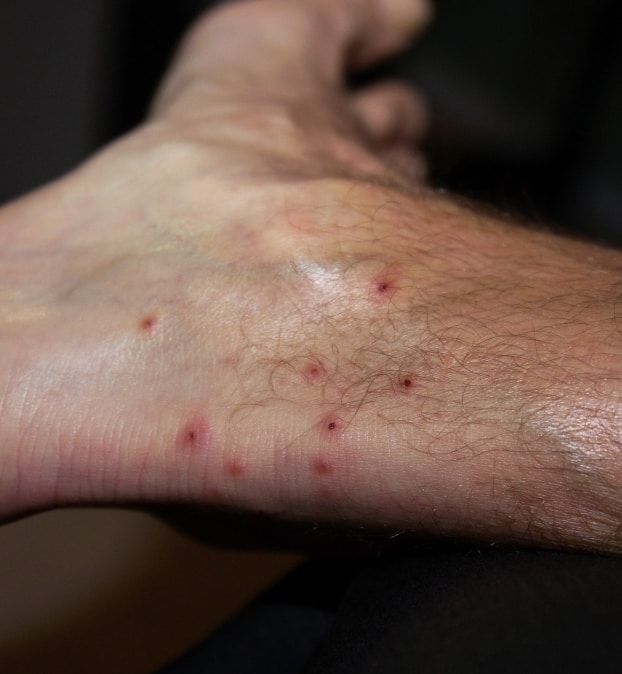
What Do Flea Bites Look Like on Humans?
Fleas are known to bite humans on their lower extremities (lower legs, ankles, feet). Flea bites look like small, red swollen spots, usually in clusters of two or three bites each. Sometimes these spots have a whitish/pinkish halo.
Flea bites are also known to be itchy, and they could cause hives and shortness of breath if the person or pet bitten has an allergy to flea bites. If the red bites are found on the upper parts of the body, chances are better that the bites came from a bed bug or bed bugs.
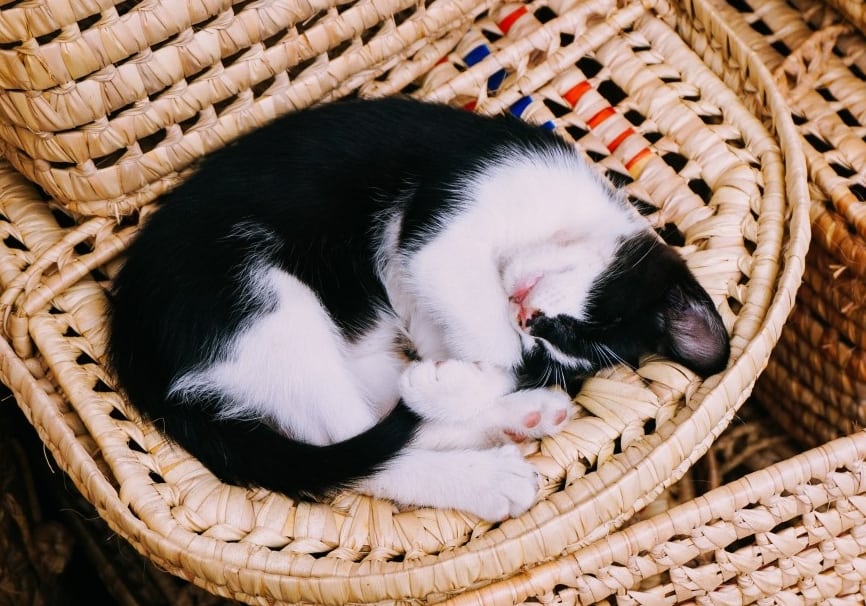
How Do You Prevent Fleas at Home?
Flea problems almost always start out in your yard, but note that even your pet’s veterinarian office might be a possible source of fleas that you find in your home.
Outdoor Flea Control
Fleas are usually found in the shady, cool areas of your yard. They are often found in tall grass, near bushes, in yard debris, and in shrubbery.
So your first defense against fleas in your yard (and other pests) is to mow your lawn and trim your shrubs on a regular basis. Trim your shrubs back at least an inch from the side of your house. Clear your lawn of clutter (e.g., tree limbs, leaves, etc.), and keep mulch and firewood at least 20 feet away from the side of your house and other structures on your yard, like sheds. If you happen to live in a heavily wooded area, keeping vermin away from your yard (e.g., raccoons, deer, etc.) will also keep fleas away.

Indoor Flea Control
Vacuum regularly, including your carpets, drapes, furniture, pet areas, pet bedding, etc. Launder pet bedding regularly in hot water, and dry on the highest heat level.
Treat your pets with flea control products (shampoos, powders, etc.), but consult with their veterinarian first. While you’re treating pets, be sure to be using flea control products around the house at the same time, or the fleas will just have an easier time making a comeback.
While you are doing all you can to help prevent and control fleas in your home, realize that sometimes fleas can just get out of hand. Even in the cleanest of homes! Keep checking/treating your pets for fleas on a frequent basis, but if you are seeing flea activity, realize that these pests reproduce quickly. Call our Texas pest control experts today at 832.898.0190! Or email us at [email protected] for a free consultation. We can help you, your family, and pets enjoy life at home, without the fleas.
No doubt you’re probably used to thinking about dogs scratching their torsos vigorously because they have fleas. Cats also can get fleas, even if they are primarily indoor cats. Fleas are aggressive external blood-sucking parasites that have been known for centuries to plague animals and humans alike.
Fleas’ first choice of animal hosts are actually rodents and other mammal vermin, like raccoons, squirrels, mice, and rats, but they will also feed off of the next best alternative. In the absence of rodents/vermin, and of domestic pets, guess where fleas will go next for blood meals if they’ve made their way indoors. Yes, fleas also bite and feed on human beings to get the blood they need to survive and to reproduce.
Careful not to confuse fleas with bed bugs, however. Fleas get understandably confused with bed bugs on a regular basis, probably because of their similar appearance (roundish and brown), as well as the similarity in the appearance of their bites.

Flea bites can be itchy and aggravating enough, but worse, these parasites are transmitters of bacteria, diseases, and other contaminants. Fleas are one of the primary causes of the spread of the Black Death (the Plague) during the Middle Ages, which killed hundreds of millions of people. Even with all our advances since then, fleas are still a public health concern.
How Do Fleas Get Into Your Home?
If you have a pet (or more than one), fleas are known to hitch a ride indoors on pets who play outside, then head inside. When a flea, or fleas, sneak indoors, it will then jump off your pet to to lay eggs, which can lead to an infestation. Often fleas simply lay eggs right on the animal (after which they slide off into your carpeting, onto your furniture, into the pet’s bedding, etc.)
Fleas can also hitch a ride indoors on a human just as easily (Legs, shoes, sandals, ankles, etc.).
How Many Types of Fleas Bite Humans?
There are some 2,500 known flea species throughout the world, and the most common in the United States is the Cat flea. Cat fleas prefer cats as hosts, but they will also feed on dogs and humans. Humans can also be bitten by what are known as “sand fleas,” which most often live in coastal/beach areas.
Here are the most common species of fleas that homeowners will typically deal with:
- Cat fleas (Ctenocephalides felis) – Cat fleas Cat fleas prefer cats as hosts, but will also latch onto dogs, and also feed on human beings.
- Dog fleas (Ctenocephalides canis) – Dog fleas are similar to cat fleas, but prefer dogs over cats and humans.
- Human fleas (Pulex irritans) – So-called “Human fleas” actually prefer pigs as hosts, but will settle for humans, and other animals.
What Do Fleas Look Like on Humans?
Adult fleas are about 1/10″ to 1/8″ in length, without wings, oval shaped, and are vertically flat, which helps them burrow headfirst through thick, coarse animal hair. They range in color from dark, reddish-brown to brown to black. Flea larvae are usually pale, white, and they usually only measure about 1/12″ in length, with the appearance of small maggots.
Fleas’ hind legs are longer than the rest of their legs, and are particularly powerful. They can jump up to a foot into the air, and as much as two feet forward. This is incredibly high and far for them to jump, considering their miniscule size.

What Do Flea Bites Look Like on Humans?
Fleas are known to bite humans on their lower extremities (lower legs, ankles, feet). Flea bites look like small, red swollen spots, usually in clusters of two or three bites each. Sometimes these spots have a whitish/pinkish halo.
Flea bites are also known to be itchy, and they could cause hives and shortness of breath if the person or pet bitten has an allergy to flea bites. If the red bites are found on the upper parts of the body, chances are better that the bites came from a bed bug or bed bugs.

How Do You Prevent Fleas at Home?
Flea problems almost always start out in your yard, but note that even your pet’s veterinarian office might be a possible source of fleas that you find in your home.
Outdoor Flea Control
Fleas are usually found in the shady, cool areas of your yard. They are often found in tall grass, near bushes, in yard debris, and in shrubbery.
So your first defense against fleas in your yard (and other pests) is to mow your lawn and trim your shrubs on a regular basis. Trim your shrubs back at least an inch from the side of your house. Clear your lawn of clutter (e.g., tree limbs, leaves, etc.), and keep mulch and firewood at least 20 feet away from the side of your house and other structures on your yard, like sheds. If you happen to live in a heavily wooded area, keeping vermin away from your yard (e.g., raccoons, deer, etc.) will also keep fleas away.

Indoor Flea Control
Vacuum regularly, including your carpets, drapes, furniture, pet areas, pet bedding, etc. Launder pet bedding regularly in hot water, and dry on the highest heat level.
Treat your pets with flea control products (shampoos, powders, etc.), but consult with their veterinarian first. While you’re treating pets, be sure to be using flea control products around the house at the same time, or the fleas will just have an easier time making a comeback.
No doubt you’re probably used to thinking about dogs scratching their torsos vigorously because they have fleas. Cats also can get fleas, even if they are primarily indoor cats. Fleas are aggressive external blood-sucking parasites that have been known for centuries to plague animals and humans alike.
Fleas’ first choice of animal hosts are actually rodents and other mammal vermin, like raccoons, squirrels, mice, and rats, but they will also feed off of the next best alternative. In the absence of rodents/vermin, and of domestic pets, guess where fleas will go next for blood meals if they’ve made their way indoors. Yes, fleas also bite and feed on human beings to get the blood they need to survive and to reproduce.
Careful not to confuse fleas with bed bugs, however. Fleas get understandably confused with bed bugs on a regular basis, probably because of their similar appearance (roundish and brown), as well as the similarity in the appearance of their bites.

Flea bites can be itchy and aggravating enough, but worse, these parasites are transmitters of bacteria, diseases, and other contaminants. Fleas are one of the primary causes of the spread of the Black Death (the Plague) during the Middle Ages, which killed hundreds of millions of people. Even with all our advances since then, fleas are still a public health concern.
How Do Fleas Get Into Your Home?
If you have a pet (or more than one), fleas are known to hitch a ride indoors on pets who play outside, then head inside. When a flea, or fleas, sneak indoors, it will then jump off your pet to to lay eggs, which can lead to an infestation. Often fleas simply lay eggs right on the animal (after which they slide off into your carpeting, onto your furniture, into the pet’s bedding, etc.)
Fleas can also hitch a ride indoors on a human just as easily (Legs, shoes, sandals, ankles, etc.).
How Many Types of Fleas Bite Humans?
There are some 2,500 known flea species throughout the world, and the most common in the United States is the Cat flea. Cat fleas prefer cats as hosts, but they will also feed on dogs and humans. Humans can also be bitten by what are known as “sand fleas,” which most often live in coastal/beach areas.
Here are the most common species of fleas that homeowners will typically deal with:
- Cat fleas (Ctenocephalides felis) – Cat fleas Cat fleas prefer cats as hosts, but will also latch onto dogs, and also feed on human beings.
- Dog fleas (Ctenocephalides canis) – Dog fleas are similar to cat fleas, but prefer dogs over cats and humans.
- Human fleas (Pulex irritans) – So-called “Human fleas” actually prefer pigs as hosts, but will settle for humans, and other animals.
What Do Fleas Look Like on Humans?
Adult fleas are about 1/10″ to 1/8″ in length, without wings, oval shaped, and are vertically flat, which helps them burrow headfirst through thick, coarse animal hair. They range in color from dark, reddish-brown to brown to black. Flea larvae are usually pale, white, and they usually only measure about 1/12″ in length, with the appearance of small maggots.
Fleas’ hind legs are longer than the rest of their legs, and are particularly powerful. They can jump up to a foot into the air, and as much as two feet forward. This is incredibly high and far for them to jump, considering their miniscule size.

What Do Flea Bites Look Like on Humans?
Fleas are known to bite humans on their lower extremities (lower legs, ankles, feet). Flea bites look like small, red swollen spots, usually in clusters of two or three bites each. Sometimes these spots have a whitish/pinkish halo.
Flea bites are also known to be itchy, and they could cause hives and shortness of breath if the person or pet bitten has an allergy to flea bites. If the red bites are found on the upper parts of the body, chances are better that the bites came from a bed bug or bed bugs.

How Do You Prevent Fleas at Home?
Flea problems almost always start out in your yard, but note that even your pet’s veterinarian office might be a possible source of fleas that you find in your home.
Outdoor Flea Control
Fleas are usually found in the shady, cool areas of your yard. They are often found in tall grass, near bushes, in yard debris, and in shrubbery.
So your first defense against fleas in your yard (and other pests) is to mow your lawn and trim your shrubs on a regular basis. Trim your shrubs back at least an inch from the side of your house. Clear your lawn of clutter (e.g., tree limbs, leaves, etc.), and keep mulch and firewood at least 20 feet away from the side of your house and other structures on your yard, like sheds. If you happen to live in a heavily wooded area, keeping vermin away from your yard (e.g., raccoons, deer, etc.) will also keep fleas away.

Indoor Flea Control
Vacuum regularly, including your carpets, drapes, furniture, pet areas, pet bedding, etc. Launder pet bedding regularly in hot water, and dry on the highest heat level.
Treat your pets with flea control products (shampoos, powders, etc.), but consult with their veterinarian first. While you’re treating pets, be sure to be using flea control products around the house at the same time, or the fleas will just have an easier time making a comeback.
Recommended Read : DEALING WITH AGGRESSIVE WASPS IN YOUR AREA
While you are doing all you can to help prevent and control fleas in your home, realize that sometimes fleas can just get out of hand. Even in the cleanest of homes! Keep checking/treating your pets for fleas on a frequent basis, but if you are seeing flea activity, realize that these pests reproduce quickly. Call our Texas pest control experts today at 832.898.0190! Or email us at [email protected] for a free consultation. We can help you, your family, and pets enjoy life at home, without the fleas.
Call Us Today! 832.898.0190
While you are doing all you can to help prevent and control fleas in your home, realize that sometimes fleas can just get out of hand. Even in the cleanest of homes! Keep checking/treating your pets for fleas on a frequent basis, but if you are seeing flea activity, realize that these pests reproduce quickly. Call our Texas pest control experts today at 832.898.0190! Or email us at [email protected] for a free consultation. We can help you, your family, and pets enjoy life at home, without the fleas.
Call Us Today! 832.898.0190
How Do Fleas Get Into Your Home?
If you have a pet (or more than one), fleas are known to hitch a ride indoors on pets who play outside, then head inside. When a flea, or fleas, sneak indoors, it will then jump off your pet to to lay eggs, which can lead to an infestation. Often fleas simply lay eggs right on the animal (after which they slide off into your carpeting, onto your furniture, into the pet’s bedding, etc.)
Fleas can also hitch a ride indoors on a human just as easily (Legs, shoes, sandals, ankles, etc.).
How Many Types of Fleas Bite Humans?
There are some 2,500 known flea species throughout the world, and the most common in the United States is the Cat flea. Cat fleas prefer cats as hosts, but they will also feed on dogs and humans. Humans can also be bitten by what are known as “sand fleas,” which most often live in coastal/beach areas.
Here are the most common species of fleas that homeowners will typically deal with:
- Cat fleas (Ctenocephalides felis) – Cat fleas Cat fleas prefer cats as hosts, but will also latch onto dogs, and also feed on human beings.
- Dog fleas (Ctenocephalides canis) – Dog fleas are similar to cat fleas, but prefer dogs over cats and humans.
- Human fleas (Pulex irritans) – So-called “Human fleas” actually prefer pigs as hosts, but will settle for humans, and other animals.
What Do Fleas Look Like on Humans?
Adult fleas are about 1/10″ to 1/8″ in length, without wings, oval shaped, and are vertically flat, which helps them burrow headfirst through thick, coarse animal hair. They range in color from dark, reddish-brown to brown to black. Flea larvae are usually pale, white, and they usually only measure about 1/12″ in length, with the appearance of small maggots.
Fleas’ hind legs are longer than the rest of their legs, and are particularly powerful. They can jump up to a foot into the air, and as much as two feet forward. This is incredibly high and far for them to jump, considering their miniscule size.

What Do Flea Bites Look Like on Humans?
Fleas are known to bite humans on their lower extremities (lower legs, ankles, feet). Flea bites look like small, red swollen spots, usually in clusters of two or three bites each. Sometimes these spots have a whitish/pinkish halo.
Flea bites are also known to be itchy, and they could cause hives and shortness of breath if the person or pet bitten has an allergy to flea bites. If the red bites are found on the upper parts of the body, chances are better that the bites came from a bed bug or bed bugs.

How Do You Prevent Fleas at Home?
Flea problems almost always start out in your yard, but note that even your pet’s veterinarian office might be a possible source of fleas that you find in your home.
Outdoor Flea Control
Fleas are usually found in the shady, cool areas of your yard. They are often found in tall grass, near bushes, in yard debris, and in shrubbery.
So your first defense against fleas in your yard (and other pests) is to mow your lawn and trim your shrubs on a regular basis. Trim your shrubs back at least an inch from the side of your house. Clear your lawn of clutter (e.g., tree limbs, leaves, etc.), and keep mulch and firewood at least 20 feet away from the side of your house and other structures on your yard, like sheds. If you happen to live in a heavily wooded area, keeping vermin away from your yard (e.g., raccoons, deer, etc.) will also keep fleas away.

Indoor Flea Control
Vacuum regularly, including your carpets, drapes, furniture, pet areas, pet bedding, etc. Launder pet bedding regularly in hot water, and dry on the highest heat level.
Treat your pets with flea control products (shampoos, powders, etc.), but consult with their veterinarian first. While you’re treating pets, be sure to be using flea control products around the house at the same time, or the fleas will just have an easier time making a comeback.
While you are doing all you can to help prevent and control fleas in your home, realize that sometimes fleas can just get out of hand. Even in the cleanest of homes! Keep checking/treating your pets for fleas on a frequent basis, but if you are seeing flea activity, realize that these pests reproduce quickly. Call our Texas pest control experts today at 832.898.0190! Or email us at [email protected] for a free consultation. We can help you, your family, and pets enjoy life at home, without the fleas.
Call Us Today! 832.898.0190
Error: Contact form not found.

